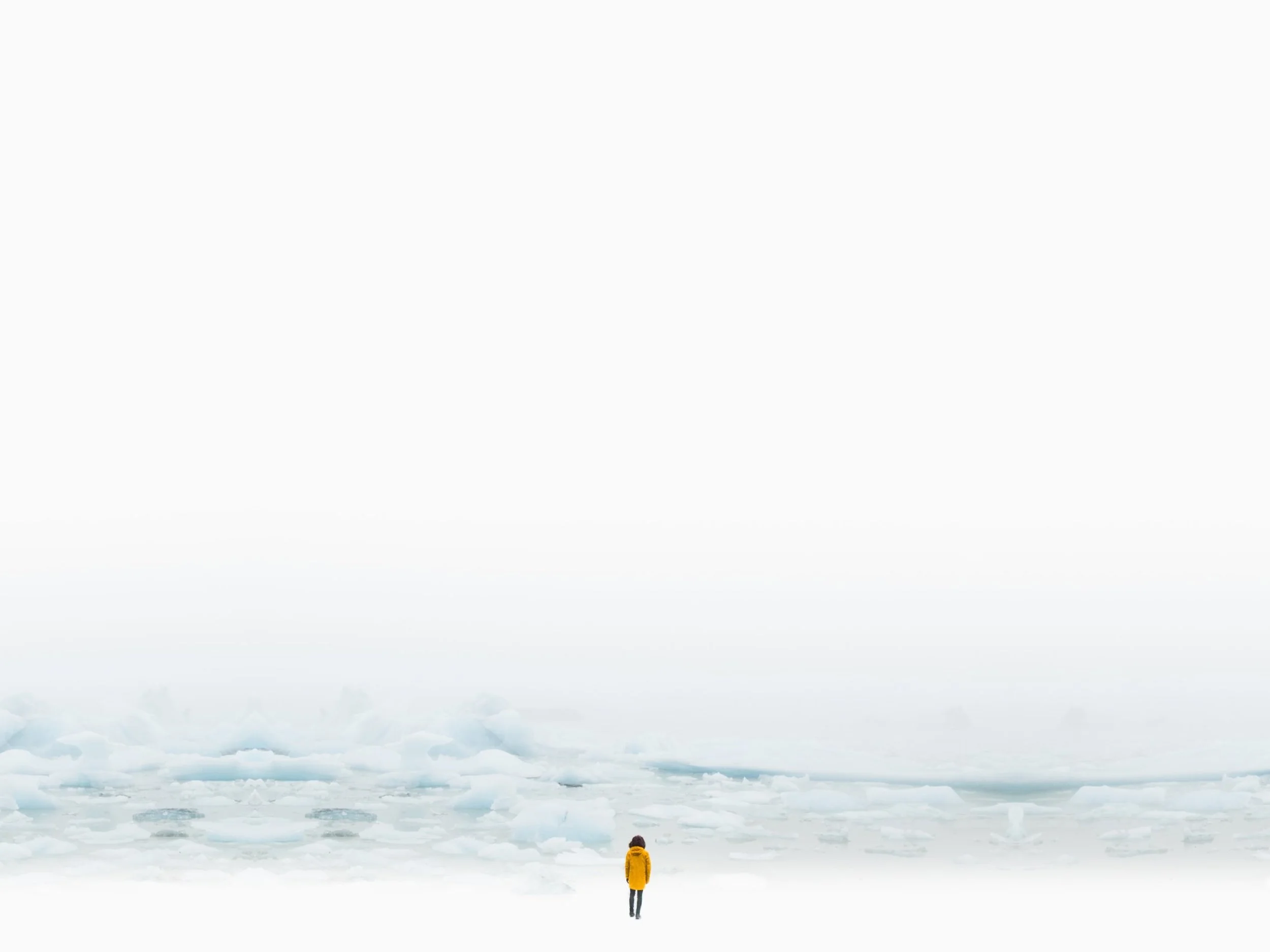In HUMAN TIME
A note from our leadership
The poles of the Earth can seem implacably vast, unchangeable, and forbidding. But every week of climate news confirms that polar ice, far from invulnerable, is profoundly affected by human activity. How does this contradiction between invulnerability and fragility reflect on us? What does polar ice tell us about ourselves?
Through the work of Forman and Weil, In Human Time examines these questions. Humans possess a capacity for awe, creativity, curiosity, the advancement of knowledge and understanding; for beautiful art and brilliant science; for astounding instances of communication and common action.
We are, in short, defined by qualities permitting reasoned optimism that we can survive the climate crisis. But we are also capable of a reckless lack of attention and care. This tension spotlights our agency, our ability to decide and act. Which side of our genetic and cultural makeup will we choose? Which will drive our actions? It’s up to each and all of us.
Forman and Weil’s installations raise questions of timescale that give rise to the exhibition title. Forman's drawing may look at first like a photograph captured in a fraction of a second, but the work is the product of weeks of touches of blue and gray. During the show, we learned this in a time-lapse video that looks mesmerizingly fast—especially in relation to Weil's 4.5 hour video descent, the apparently slow pacing of which can pull the viewer into a meditative suspension. But some of the one-meter ice core sections composing the film capture four hundred years of time. The slow film is the fast one.
These incongruities bring time into focus. Meaningful shared action demands a stronger awareness of time, of both continuum and urgency, than it is comfortable to hold. James Baldwin said of the struggle for racial equality and our common humanity that “There is never a time in the future in which we will work out our salvation. The challenge is in the moment; the time is always now.” Human beings will be living with climate change past the foreseeable horizon. What that looks like will depend on decisions we make together about our thought, dialogue, and action—now.
Peter S. Knight
Board Chair
Miranda K.S. Massie
Director




